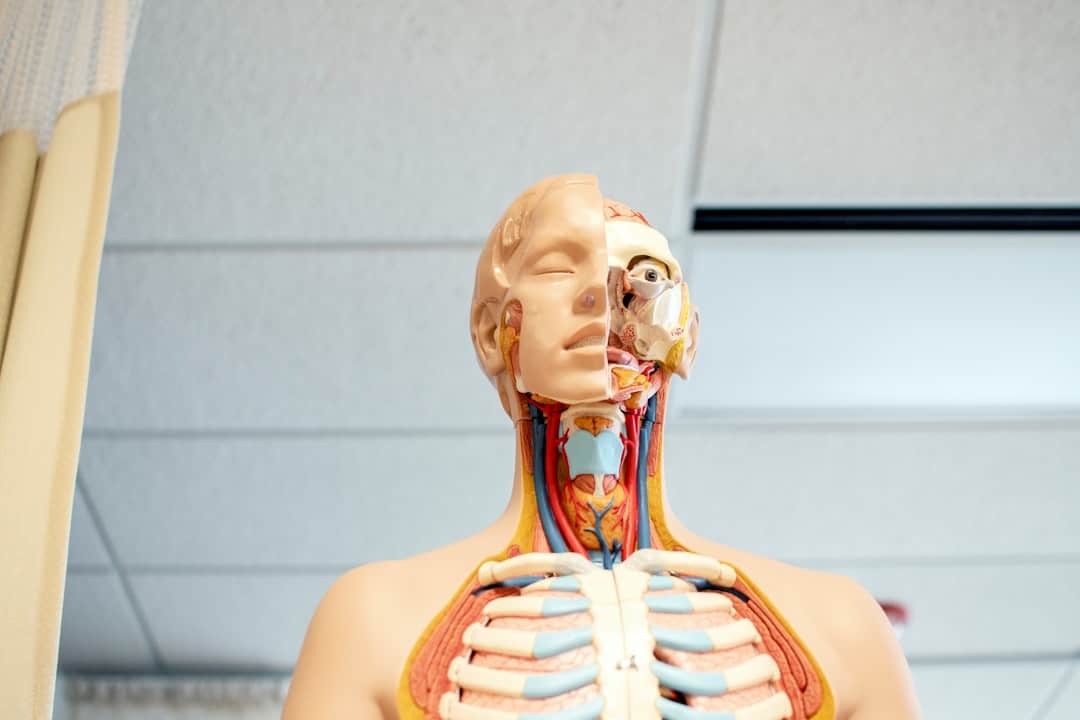Accurate text classification is important in many fields, such as document categorization, sentiment analysis, natural language processing, & spam detection. For the purpose of making defensible decisions based on textual content, precise classification is necessary. Businesses can make data-driven decisions and gain a deeper understanding of customer feedback by accurately identifying positive and negative sentiments through sentiment analysis.
Key Takeaways
- Accurate text classification is crucial for various applications such as sentiment analysis, spam detection, and content categorization.
- Choosing the right text classification algorithm depends on the nature of the text data and the specific problem at hand.
- Preprocessing text data, including tasks such as tokenization, stemming, and removing stop words, can significantly improve classification accuracy.
- Feature selection and engineering techniques, such as TF-IDF and word embeddings, play a key role in improving the performance of text classification models.
- Cross-validation techniques, such as k-fold and stratified cross-validation, are essential for robustly evaluating the performance of text classification models.
In order to efficiently identify & eliminate unsolicited emails, spam filtering depends on precise classification. High accuracy in document classification means that information can be arranged and retrieved more effectively. Accurate text classification is critical to preserving automated systems’ trustworthiness & dependability. Accurate classification is necessary for applications like fake news detection and news classification in order to give users relevant & trustworthy information.
Accurate document classification is essential in legal & regulatory contexts to identify & process materials in accordance with applicable laws and regulations. In the end, precise text classification is essential for creating automated systems that can deliver trustworthy information in a variety of fields and applications and make dependable decisions. The benefits and drawbacks of algorithms. Text classification tasks involving word frequencies benefit greatly from the simplicity and efficiency of the Naive Bayes algorithm, which performs well even with large datasets.
Strong algorithms that work well for binary classification tasks, support vector machines can handle high-dimensional data. Text classification tasks with a variety of features can benefit from the versatility of Decision Trees & Random Forests, as they can handle both numerical and categorical data. Deep Learning Frameworks for Intricate Patterns.
| Technique | Accuracy Improvement (%) |
|---|---|
| Feature Engineering | 5 |
| Ensemble Learning | 7 |
| Hyperparameter Tuning | 4 |
| Transfer Learning | 10 |
High accuracy text classification tasks can be accomplished by neural networks, particularly with deep learning models, which are good at identifying intricate patterns in text data. Things to Take Into Account When Selecting an Algorithm. Considerations including the size of the dataset, the dimensionality of the feature space, the balance of classes, and the model’s interpretability should all be taken into account when selecting the best text classification algorithm.
It is possible to choose the best algorithm for obtaining high text classification accuracy by carefully weighing these considerations. Text classification tasks require preprocessing in order to increase accuracy. Algorithms for classifying data may perform less well if text data contains noise, inconsistent information, & irrelevant information. Tokenization, lowercasing, stop word removal, stemming or lemmatization, and special character handling are all examples of preprocessing techniques that are crucial for cleaning & standardizing text data.
In order to help capture the semantic meaning of the text, tokenization entails dividing the text into discrete words, or tokens. Words with different cases are treated equally when all words are lowercased, which aids in standardizing the text data. taking out stop words like “and,” “the,” “is,” and so forth.
aids in lowering background noise in text data & concentrates on words with greater meaning. Word variations can be captured and the dimensionality of the feature space is decreased by stemming or lemmatization, which helps reduce words to their root form. It’s critical to handle special characters like punctuation and symbols to prevent them from impairing classification algorithm performance. Effective preprocessing can reduce noise & extraneous information, standardize the text data, & capture the semantic meaning of the text, all of which can increase the accuracy of text classification models. Enhancing accuracy in text classification tasks is largely dependent on feature engineering and feature selection.
High dimensionality and computational complexity can result from the abundance of features found in text data, such as word frequencies, n-grams, & semantic features. Therefore, choosing pertinent features and creating new features can aid in enhancing text classification models’ functionality. The most pertinent features for text classification can be found using feature selection methods like mutual information, chi-square test, & feature importance from tree-based models. In classification tasks, it is possible to reduce dimensionality and computational complexity while retaining high accuracy by choosing only the most informative features.
In order to extract more significant information from the text data, feature engineering entails building new features from preexisting ones. One way to extract contextual information from the text is by constructing n-grams, which are collections of words that are adjacent to each other. Semantic features that extract higher-level semantic meaning from text data include word embeddings and topic modeling. Text classification models can have their accuracy raised by extracting more valuable information from text data while lowering computational complexity & dimensionality through the careful selection of pertinent features & the engineering of new features.
In order to assess text classification models’ performance and make sure they generalize well to new data, cross-validation techniques are essential. Using multiple subsets of the dataset, training the model on one, and assessing its performance on the remaining subsets is the process of cross-validation. This makes evaluating the model’s performance on hypothetical data easier and yields a more accurate performance estimate.
Typical cross-validation methods consist of leave-one-out cross-validation, nested cross-validation, stratified k-fold cross-validation, & k-fold cross-validation. In K-fold cross-validation, the dataset is divided into k subsets. Training is done on the remaining k-1 subsets while each subset is used as a validation set. In the event of imbalanced datasets, stratified k-fold cross-validation guarantees that every class is represented fairly in every fold.
Using one sample as the validation set and the remaining samples for training is known as leave-one-out cross-validation. For hyperparameter tuning within cross-validation loops to avoid overfitting, nested cross-validation is employed. Making decisions regarding a model’s generalization capabilities & obtaining a more dependable estimate of the model’s performance on unknown data can be achieved through the application of cross-validation techniques.
Typical Methods of Hyperparameter Adjustment. Hyperparameter tuning is often accomplished through grid search and random search methods. Grid search is a technique that identifies a grid of hyperparameters and thoroughly explores every possible combination to identify the model with the best performance.
To find the best model, random search selects hyperparameter combinations at random from predefined distributions. Complex Methods for Optimizing Hyperparameters. Also, by using previous evaluations to direct the search process, methods like genetic algorithms and Bayesian optimization can be utilized for more effective hyperparameter tuning.
The advantages of adjusting hyperparameters. By determining the ideal combination of hyperparameters that fit the unique characteristics of the text data, text classification models can perform better and achieve higher accuracy through effective hyperparameter fine-tuning. Enhancing text classification task accuracy can be achieved by utilizing ensemble methods. In ensemble methods, predictions are made by combining several base models, which frequently produces better results than single models. Text classification ensemble techniques like bagging, boosting, stacking, and random forests are frequently used.
Bootstrap aggregating, or bagging, is the process of training multiple base models on various subsets of the training data & then averaging or voting to combine their predictions. Boosting is a training technique where base models are sequentially trained, with each model concentrating on fixing the mistakes made by its predecessor. In stacking, several base models are trained, and then a meta-model is used to combine the predictions of these models.
To create a collection of decision trees, random forests combine feature randomization & bagging. Ensemble approaches enhance generalization skills and reduce overfitting by capturing various facets of the data. Text classification tasks can benefit from improved accuracy through the effective use of ensemble methods, which combine different models to produce predictions that are more reliable. To sum up, maintaining trustworthiness in automated systems & making dependable decisions require high text classification accuracy.
It is possible to increase text classification task accuracy and create more dependable & efficient automated systems for a variety of applications by selecting the appropriate algorithm, efficiently preprocessing text data, picking pertinent features, applying cross-validation techniques, fine-tuning hyperparameters, and utilizing ensemble methods.
If you’re interested in the future of technology and virtual worlds, you may want to check out this article on future trends and innovations in the metaverse industry. It explores the potential advancements and projections in the metaverse, which could have implications for text classification and other technological developments.
FAQs
What is text classification?
Text classification is the process of categorizing and organizing text documents into different predefined classes or categories based on their content. It is a fundamental task in natural language processing and machine learning.
What are the applications of text classification?
Text classification has a wide range of applications, including spam filtering, sentiment analysis, topic categorization, language identification, and content recommendation systems. It is also used in customer support for routing and prioritizing incoming messages.
What are the common techniques used in text classification?
Common techniques used in text classification include bag-of-words, term frequency-inverse document frequency (TF-IDF), word embeddings, and machine learning algorithms such as Naive Bayes, Support Vector Machines, and deep learning models like recurrent neural networks (RNN) and convolutional neural networks (CNN).
What are the challenges in text classification?
Challenges in text classification include dealing with unstructured and noisy text data, handling large volumes of text documents, addressing class imbalance, and ensuring the model’s ability to generalize to new and unseen data. Additionally, understanding the context and nuances of human language can be challenging for machines.
How is text classification evaluated?
Text classification models are evaluated using metrics such as accuracy, precision, recall, F1 score, and area under the receiver operating characteristic curve (AUC-ROC). These metrics help assess the model’s performance in correctly classifying text documents into their respective categories.










Leave a Reply